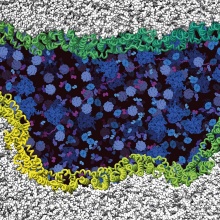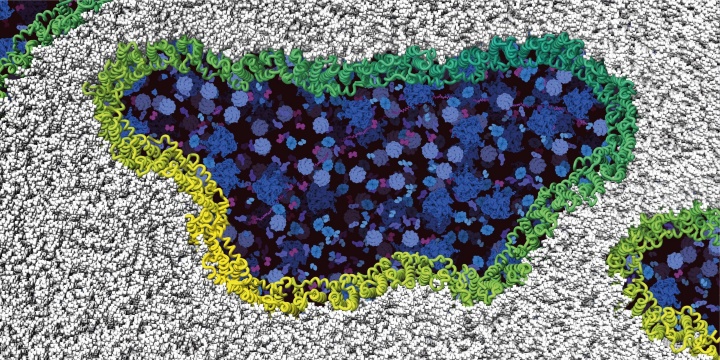Cell death is an essential process in organisms: it prevents the development of tumors and the spread of pathogens by selectively eliminating damaged or infected cells. The common perception was that cells simply burst at the end of their lives. However, an international team of researchers from the Universities of Stuttgart, Basel, Lausanne, ETH Zurich and other institutions have now discovered how a specific protein called ninjurin-1 creates predetermined breaking points for rupturing the cell membrane and thus inducing cell death. The results were published in the renowned journal Nature.
Using state-of-the-art technology such as high-resolution microscopy and cryo-electron microscopy, the researchers were for the first time able to visualize the small protein ninjurin-1, which floats in the cell membrane and has been known since 1996. Subsequently, Dr. Kristyna Pluhackova, first author and junior research group leader for molecular dynamics in the Cluster of Excellence "Data-Integrated Simulation Science (SimTech)", succeeded to demonstrate how ninjurin-1 ultimately destroys the cell at the atomic level by molecular dynamics simulations. "If the ninjurin-1 proteins receive the command to destroy the cell, they become active, form filaments and rupture the cell membrane piece by piece until the cell disintegrates completely. This mechanism was subsequently confirmed by the collaborators from Lausanne using living cells," Pluhackova explains.
The knowledge of the atomistic structure of the ninjurin-1 protein is an essential milestone for our understanding of cell death opening up new possibilities for therapies in cancer, neurodegenerative diseases such as Parkinson's, in infections or inflammations.
Expert Contact:
Dr. Kristyna Pluhackova, University of Stuttgart, Cluster of Excellence "Data-Integrated Simulation Science (SimTech), Tel. +49 711 685 60118, E-Mail
Publication:
Morris Degen, José Carlos Santos, Kristyna Pluhackova et al: Structural basis of NINJ1-mediated plasma membrane rupture in cell death, Nature 2023, DOI 10.1038/s41586-023-05991-z



